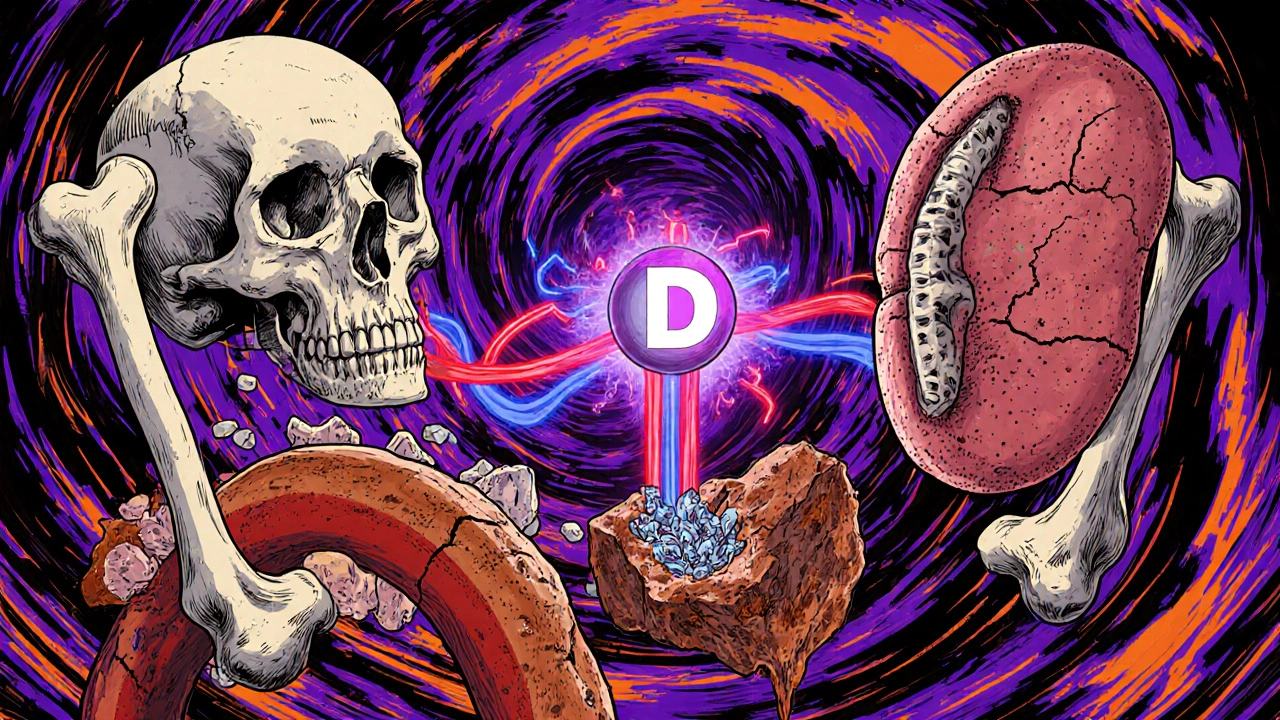Mineral Bone Disorder: Causes, Treatments, and What You Need to Know
When your body can’t keep calcium, phosphorus, and vitamin D in balance, you’re dealing with a mineral bone disorder, a group of conditions where bone strength and mineral levels go wrong due to kidney, hormonal, or nutritional problems. Also known as chronic kidney disease-mineral and bone disorder, it’s not just about weak bones—it’s about how your whole system breaks down when minerals go off track. This isn’t rare. People with kidney disease, those on long-term steroids, or even older adults with poor nutrition often develop it without realizing why their bones ache or fracture so easily.
It starts with your kidneys. When they don’t work right, they can’t remove excess phosphorus or activate vitamin D properly. That throws off calcium levels, and your body starts stealing calcium from your bones to keep blood levels stable. Over time, your bones get porous and fragile. This is called renal osteodystrophy, a type of mineral bone disorder caused by long-term kidney failure. But it’s not just kidney patients. Low vitamin D from lack of sun or poor diet can trigger similar problems—even in young, healthy people. And when your parathyroid glands go into overdrive trying to fix the imbalance, they release too much hormone, making bone loss worse. This whole mess is why doctors now check not just your bone density, but also your blood levels of calcium, phosphorus, and PTH.
What you’ll find in these posts isn’t just theory. You’ll see real comparisons between treatments like Rocaltrol (calcitriol), an active form of vitamin D used to treat mineral bone disorders in kidney patients and other vitamin D supplements, how dialysis affects bone health, and why some meds meant to help end up making things worse. There’s also advice on talking to your pharmacist about supplements that might interfere, how insurance blocks the right meds, and what alternatives actually work when standard treatments fail. No fluff. Just what you need to understand your bones, your meds, and how to push back when the system doesn’t have your back.
